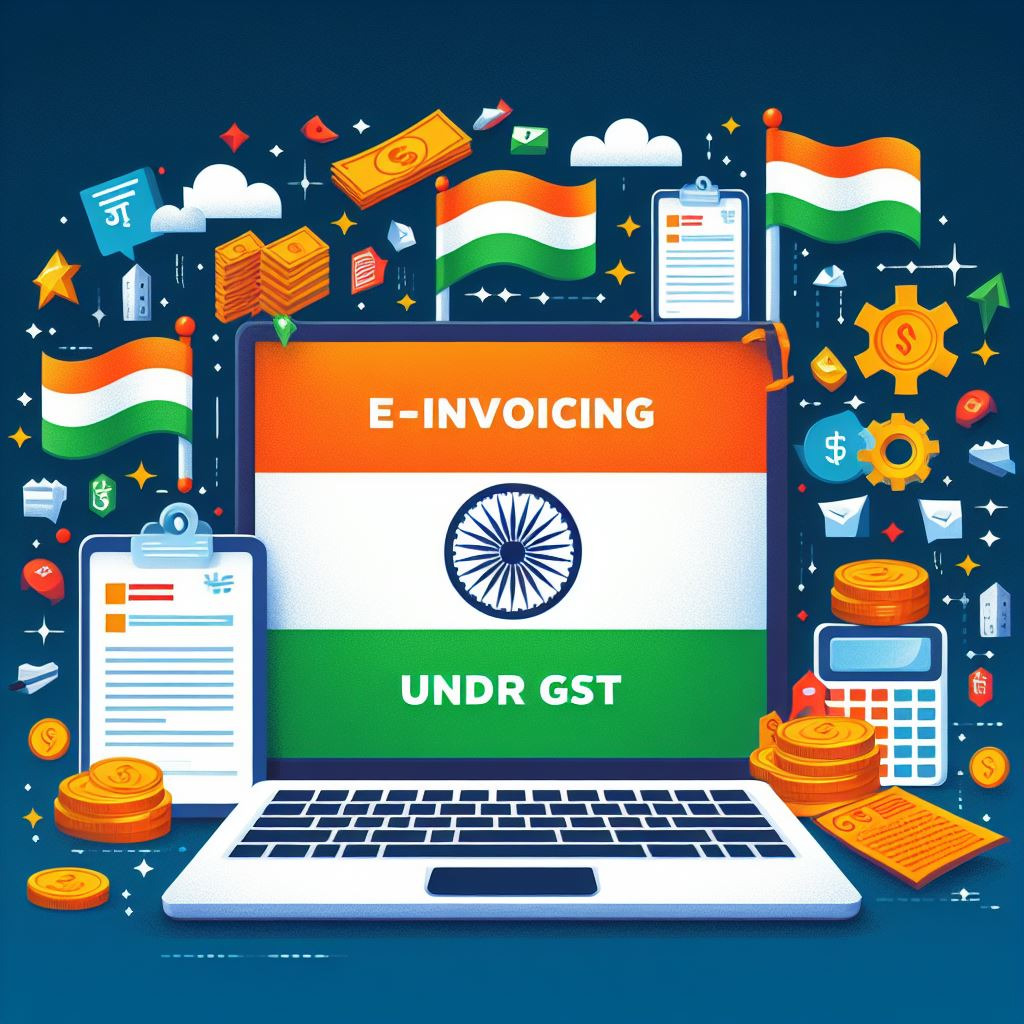WHAT IS E-INVOICING UNDER GST? ITS APPLICABILITY,LIMIT,AMENDMENT,CANCELLATION ,CHANGES & IMPLEMENTATION DATE
The 37th meeting of GST council held on 20th september 2019 introduced the scheme of E-Invoicing, this move was initiated in order to standardise the GST ecosystem and to keep checks and balances upon the large number of business transactions taking place everyday, prior to e-invoicing there was no standard method adopted by the business which was non-uniform and hard to compile resulting in several fake invoices at the time of input tax credit (ITC).
By Tanvi Thapliyal March 01, 2024
WHAT IS E-INVOICING UNDER GST? ITS APPLICABILITY,LIMIT,AMENDMENT,CANCELLATION ,CHANGES & IMPLEMENTATION DATE
RSS FEED
The 37th meeting of GST council held on 20th september 2019 introduced the scheme of E-Invoicing, this move was initiated in order to standardise the GST ecosystem and to keep checks and balances upon the large number of business transactions taking place everyday, prior to e-invoicing there was no standard method adopted by the business which was non-uniform and hard to compile resulting in several fake invoices at the time of input tax credit (ITC).
WHAT IS AN E-INVOICE
E- invoice is an electronically generated invoice but does this mean that the businesses everytime they conduct a transaction need to go to the official portal of GST and then upload the transaction details and generate an e-invoice, the answer is NO, let us burst this myth with the help of an example.
A and B are involved in a B2B transaction where A is the manufacturer of goods and B is the retailer of such goods.
Now, A sells his goods to B Who pays him the money for these goods, A creates an invoice against these Goods and B creates an invoice against the payment for such goods both A&B use different billing applications for transactions which generate variable invoices.
Now,Government instead of creating a separate portal for these e-invoices designed a standard software the adoption of whichfull was made compulsory on these existing softwares, which automatically converted the invoices in a new e-invoice standard.
Introduction of e-invoice was not only a tax reform but also a business reform which eliminated the risk of errors and transcription during day to day business.
HOW DOES E-INVOICE FUNCTIONS
E-invoice generates a unique IRN i.e. an invoice reference number which is a 64 character invoice reference number.
Let us understand this with the help of an example,
B a retailer paid A the manufacturer INR 50000 against the goods bought,A pays it using a electronic transaction application, as soon as he will pay the amount the application will generate an e-invoice for the payment made and will generate a unique 64 character length IRN number alongwith a QR code which will be digitally signed and upon scanning the QR code entire detail of the transaction including the GSTIN of supplier and recipient, invoice number,date of generation, taxable value and gross tax, HSN number and IRN number all these important details will get generated in no time.
QR generation made verification easy and quick, interesting thing is that this QR could be accessed through the central portal as well as a especially designed offline app which works even in the areas with no internet connectivity making surveillance and checking easy.
PROCESS OF GENERATING E-INVOICE
-
The taxpayer must make sure that the rearranged ERP system is used in a way that meets PEPPOL standards.
-
He could work with the software service provider to include the e-invoicing standard set, also known as the e-invoice schema (standards).
-
He would need to have the necessary data sent to him by the CBIC first, though.
-
There are mainly two ways for a person to get an IRN:
Your computer's IP address can be "whitelisted" on the e-invoice portal so that it can be used for a straight API integration or an integration through a GST Suvidha Provider.
-
To send a lot of invoices at once, download the bulk generation tool. It will make a JSON file that can be uploaded to the e-invoice site to make a lot of IRNs at once.
-
After that, the taxpayer has to make a regular bill on that programme.
-
He has to give all the important information, like the billing name and address, the GSTN of the seller, the amount of money being paid, the item rate, the GST rate that applies, the tax amount, and so on.
-
If you choose either of the choices above, you will need to make an invoice in the ERP or billing software.
-
After that, add the invoice information to the IRP using the JSON file, an application service provider (app or GSP), or a direct API. Make sure that all required areas are filled out.
-
The IRP will be in charge of keeping track of e-invoicing and making sure it is real. You can also talk to IRP through SMS and mobile apps, among other ways.
-
IRP will check the important parts of the B2B invoice for errors, look for any duplicates, and make a reference number (hash) for the invoice. IRN is made up of four parts: the seller's GSTIN, the order number, the fiscal year (YYYY-YY), and the type of document (INV, DN, or CN).
-
The invoice reference number (IRN) is made by IRP, the bill is digitally signed, and a QR code is made for the seller in Output JSON.
-
The supplier, on the other hand, will be notified by email (if given in the invoice) when the electronic bill is created.
-
IRP will send the verified payload to the GST site so that GST returns can be made. Also, if necessary, information will be sent to the e-way bill site. At the right time, the seller's GSTR-1 form is automatically filled out. In turn, this figures out how much tax is due.
-
With a QR, a citizen can continue to print his bill as he does now. With the e-invoicing method, all taxpayers are required to report invoices on IRP in electronic form.
BENEFITS OF E-INVOICE SYSTEM
-
Standardisation of invoicing format resulted in one time reporting for B2B transactions ultimately resulted in saving time as it doesnot involves unnecessary steps,costs as it is a paperless process,mistakes as the process is automated.
-
Hasslefree input tax credit computation and claim resulting in less compliance because most of the compliances circled around ITC verification issues.
-
The process is automated which reduces the risk of mistakes and is convenient and satisfactory for the parties involved.
-
Reduced the risk of tax evasion due to easy and effective ivoice tracking mechanism.
-
Environment friendly due to the use of paperless technology as well as provides easy accessibility which is just a click away.

Tax Partner is India’s most reliable online business service platform, dedicated to helping you in starting, growing, & flourishing your business with our wide array of expert services at a very affordable cost.


